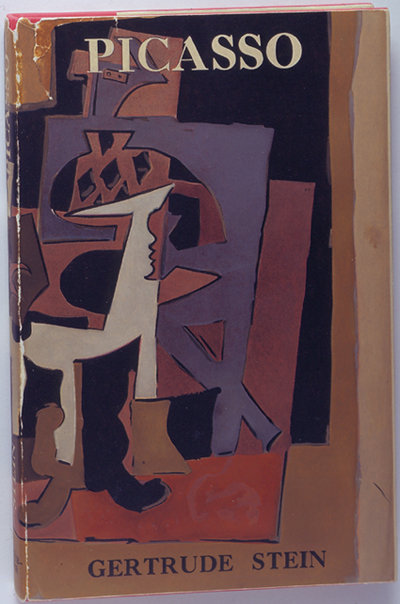Steve Wolfe on Paper
dal 1/4/2010 al 24/7/2010
Segnalato da
1/4/2010
Steve Wolfe on Paper
Menil Collection, Houston
The exhibition focuses on works on paper, some purely drawn but most combining aspects of drawing, painting, collage, and printmaking. Wolfe's art represents objects of cultural mass dissemination - books and records. Rather than the ordinary depiction of books on canvas or another two-dimensional framing device, his painted objects employ the tradition of trompe l'oeil, the trick of the eye. In the 36 works on view, tattered books and worn album covers are meticulously recreated to convey the mark of time and handling.

For the last twenty
years Steve Wolfe has created objects and
drawings of astounding craft and visual presence
that explore the intersections between material
culture, intellectual history, and personal and
collective memory. Steve Wolfe on Paper, a
collaboration between the Whitney Museum of
American Art and the Menil Collection, focuses on
works on paper, some purely drawn but most
combining aspects of drawing, painting, collage,
and printmaking.
The exhibition is co-organized by
Franklin Sirmans, the Menil's former curator of
modern and contemporary art (now head of
contemporary art at the Los Angeles County
Museum of Art) and Carter E. Foster, the Whitney's
curator of drawings.
The title, Steve Wolfe on Paper, selected by Wolfe himself, refers to the artist's technique and
subject (Wolfe's work often depicts paper in the form of books) and to his commitment to the
material and the handmade (particularly potent today, given the endangered state of the
printed word).
Wolfe's art represents objects of cultural mass dissemination — books and records. Rather
than the ordinary depiction of books on canvas or another two-dimensional framing device,
Wolfe's painted objects employ the tradition of trompe l'oeil, the trick of the eye. "The
difference here between re-presentation and representation is that trompe l'oeil seeks to
depict the subject as it really looks in two or three dimensions," said Franklin Sirmans. "This is
seen not only as a demonstration of craft and skill but, more importantly, as a tribute to the
object and its multivalent meanings."
In the 36 works on view, tattered books and worn album covers are meticulously recreated to
convey the mark of time and handling. They often fool the eye upon first inspection. The
creases, tears and basic wear point to human contact and become metaphors of enlightenment
and culture. What appear to be tattered books, worn covers, and old vinyl records (viewers
recognize and delight in Wolfe's "subjects" such as Candide, The Lovin' Spoonful's "Do You
Believe in Magic, Gore Vidal's The City and the Pillar, Joni Mitchell's "Help Me" and Waiting for
Godot) are in fact objects made from modeling paste, screen printing, graphite, and various
other techniques, meticulously produced to convey the mark of time and handling. The artist's
transformation of common objects requires the viewer to re-think what they mean as such,
placing emphasis on craft and the handmade to transform the common into the uncanny and
the sublime.
Indebted to Pop Art, Wolfe's optical strategy manifests an updated approach to craft. But while
the patina of time is crucial to Wolfe's art, perhaps what is most interesting about the collection
is its sense of autobiography. Book covers have been the primary subject of Wolfe's art and his
renderings of particular covers relating to moments in his life may be seen as self-portraits of
the artist and of his generation. Born in Pisa, Italy, in 1955, Wolfe lives and works in San
Francisco, California. A graduate of Virginia Commonwealth University, he was a recipient of
the American Academy of Arts and Letters Award.
Catalogue
The exhibition is accompanied by a 96-page catalogue containing 30
full-color plates, in-depth essays by co-curators Franklin Sirmans and
Carter E. Foster, a selected exhibition history and bibliography, and
index. Published by the Whitney in collaboration with the Menil, this
is the first museum publication on Wolfe and his significant place in
post-war American art. Support for this catalogue was provided by
The Andy Warhol Foundation for the Visual Arts, Roland Augustine
and Lawrence Luhring, and Gail and Tony Ganz.
This exhibition is generously supported by Laura and John Arnold, The Andy Warhol Foundation for the Visual Arts, Lois and George Stark, Scott and Judy Nyquist, Michael Zilkha and the City of Houston.
Exhibition organized by The Menil Collection and by the Whitney Museum of American Art
Image: Untitled (Picasso), 1996 Oil, screenprint, modeling paste, paper, canvasboard and wood 8-3/4 x 5-7/8 x 1/2 inches
The Menil Collection, Houston, Bequest of David Whitney Photo: George Hixson, Houston
For further information and images, please contact Gretchen Bock Sammons: tel 713.535.3170, or press@menil.org.
The Menil Collection, located within Houston's Museum District
1515 Sul Ross Street Houston, TX 77006
is open Wednesday through Sunday, 11 a.m. to 7 p.m.
Admission and parking are always free.



